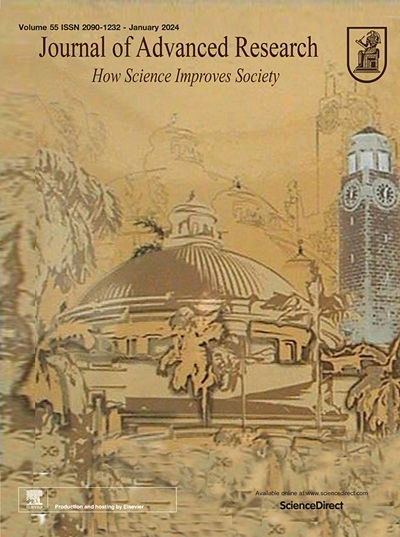咖啡因与不同糖代谢状态患者肝纤维化风险降低的关系
IF 11.4
1区 综合性期刊
Q1 MULTIDISCIPLINARY SCIENCES
引用次数: 0
摘要
背景与目的探讨不同糖代谢状态人群中肝纤维化的患病率,以及咖啡因摄入与肝纤维化的关系。方法采用全国健康与营养调查(2005- 2020年3月)为基础的横断面研究。在没有遗漏必要实验室结果的39221名成年个体中,共有23711名符合条件的个体被纳入研究。受试者被分为2型糖尿病、糖尿病前期和无糖尿病组。计算纤维化-4指数,评价肝纤维化风险。咖啡因摄入量是通过24小时的饮食回顾得出的。ResultsThe意味着 ± SE前驱糖尿病组53岁 ±0.4 年,在2型糖尿病组,个人平均 ±62岁 SE ±0.3 年。2型糖尿病患者发生肝纤维化的风险明显高于糖尿病前期或糖耐量正常的患者(5.9% vs. 3.2% vs. 2.5%, P <; 0.001)。与每日咖啡因摄入量 <; 78 mg的个体相比,每日咖啡因摄入量 ≥ 78 mg的个体在所有亚组中发生肝纤维化的风险均显著降低(优势比:无糖尿病组:0.698[0.577-0.846];前驱糖尿病组:0.553 [0.397 - 0.769];2型糖尿病组:0.720 [0.556 ~ 0.933];所有P & lt; 0·05)。结论2型糖尿病及前驱糖尿病患者肝纤维化发生率较高。提示糖尿病前期患者也应进行纤维化筛查。每天摄入咖啡因 ≥ 78 mg与肝纤维化风险降低相关。本文章由计算机程序翻译,如有差异,请以英文原文为准。

Association between caffeine and decreased liver fibrosis risk in patients with different glucose metabolism status
Background and aims
To investigate the prevalence of liver fibrosis, and the association between caffeine intake and fibrosis in populations with different glucose metabolism status.Methods
This was a cross-sectional study based on the National Health and Nutrition Examination Survey (2005-March 2020). Of the 39,221 adult individuals with no missed necessary laboratory results, a total of 23,711 eligible individuals were included in the study. Individuals were divided into T2DM, prediabetes, and diabetes-free groups. Fibrosis-4 index was calculated to evaluate the risk of liver fibrosis. Caffeine intake was obtained through a 24-hour dietary recall.Results
The mean ± SE age of prediabetes group was 53 ± 0.4 years, and in type 2 diabetes mellitus group, the individuals have a mean ± SE age of 62 ± 0.3 years. The participants with type 2 diabetes mellitus had significantly higher risk of liver fibrosis than those with prediabetes or normal glucose tolerance (5·9% vs. 3·2% vs. 2·5%, P < 0.001). Compared to individuals with daily caffeine intake < 78 mg, individuals with daily caffeine intake ≥ 78 mg had significantly lower risk of liver fibrosis in all subgroups (odds ratio: diabetes-free group: 0.698[0.577–0.846]; prediabetes group: 0·553[0·397-0·769]; type 2 diabetes mellitus group: 0·720[0·556-0·933]; all P < 0·05).Conclusions
Prevalence of liver fibrosis is high in patients with type 2 diabetes mellitus and prediabetes. It is indicated that individuals with prediabetes should also be screened for fibrosis. Caffeine intake ≥ 78 mg per day is associated with a lower risk of liver fibrosis.求助全文
通过发布文献求助,成功后即可免费获取论文全文。
去求助
来源期刊

Journal of Advanced Research
Multidisciplinary-Multidisciplinary
CiteScore
21.60
自引率
0.90%
发文量
280
审稿时长
12 weeks
期刊介绍:
Journal of Advanced Research (J. Adv. Res.) is an applied/natural sciences, peer-reviewed journal that focuses on interdisciplinary research. The journal aims to contribute to applied research and knowledge worldwide through the publication of original and high-quality research articles in the fields of Medicine, Pharmaceutical Sciences, Dentistry, Physical Therapy, Veterinary Medicine, and Basic and Biological Sciences.
The following abstracting and indexing services cover the Journal of Advanced Research: PubMed/Medline, Essential Science Indicators, Web of Science, Scopus, PubMed Central, PubMed, Science Citation Index Expanded, Directory of Open Access Journals (DOAJ), and INSPEC.
 求助内容:
求助内容: 应助结果提醒方式:
应助结果提醒方式:


